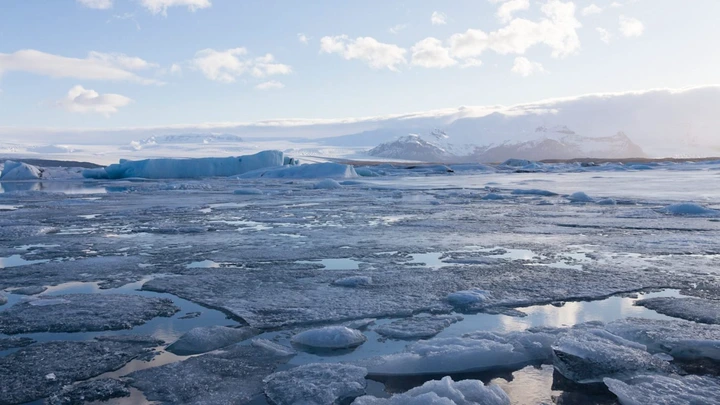
View pictures in App save up to 80% data.
A recent study conducted in Alaska reveals that the state's coastal erosion is speeding up due to "compound climate impacts." This phenomenon could potentially affect six to eight times more land compared to the effects of erosion by itself.
What’s going on?
The rising temperatures of our planet are causing swift transformations in the coastal areas of the Arctic. Following a thorough examination of 75 years of aerial and satellite data, researchers have identified a growing threat of coastal erosion in the Arctic region.
Other less-understood processes are threatening Arctic coastlines that haven't received the same amount of attention. These "compound climate impacts" include rising sea levels, permafrost thaws, intensifying storms, and sea ice thinning.
Inhabitants of northern Alaska have observed the effects of permafrost thaw subsidence, which refers to the sinking of the land surface caused by the melting of permanently frozen ground, commonly referred to as permafrost.
Certain scientists express worry that organizations like the U.S. Army Corps of Engineers and the Federal Emergency Management Agency may not be seeing the full scope of the situation.
"These sorts of bodies with a lot of resources may have not been paying enough attention to permafrost thaw subsidence as an agent of coastal change," according to Roger Creel, the study's lead author and postdoctoral scholar in Woods Hole Oceanographic Institution's Department of Physical Oceanography, per Phys.org. "This study is a wake-up call to expand the conversation.
"Creel noted, 'The combined effects of climate change are speeding up alterations along the coast. We should anticipate a nonlinear increase in coastal impacts, particularly in areas such as Northern Alaska.'"
The acceleration of coastal erosion in Alaska is concerning for several reasons. Firstly, it threatens local communities and infrastructure, as many towns and villages are situated along the coast and are at risk of being washed away. Secondly, the erosion can lead to the loss of habitat for wildlife, disrupting local ecosystems and biodiversity. Additionally, the erosion can contribute to the release of greenhouse gases trapped in permafrost, exacerbating climate change. Lastly, the cultural significance of these coastal areas for Indigenous populations is at stake, as they rely on the land for their way of life and cultural practices. Overall, the rapid erosion poses significant environmental, social, and economic challenges that require urgent attention.
"By 2100, unless coasts respond differently to future change, these compound effects may transform 6-8x more land than erosion alone may impact," according to the study. "Without mitigating measures, by 2100, coastal change could damage 40 to 65% of infrastructure in present-day ACP coastal villages and 10 to 20% of oilfield infrastructure."
Scientists have concentrated their efforts on the Arctic Coastal Plain in Alaska, an extensive area exceeding 23,000 square miles characterized by low-lying, ice-laden permafrost. This region is currently facing some of the most rapid sea-level rise and coastal erosion observed in the Arctic.
🗣️ In your opinion, does the United States face an issue with plastic waste?
🗳️ Select your option to view the results and share your thoughts!
The researchers behind the study emphasize the critical necessity for Arctic communities to engage in adaptive planning, given the challenges presented by escalating climate-related risks.
The researchers caution that by the year 2100, the synergistic effects of coastal erosion along with various climate-related factors could drive the North Slope shoreline further inland than it has been since the last interglacial phase, which occurred over 100,000 years ago.
Our overheating planet is hitting Alaska hard. A recent report highlights how our 49th state is being impacted by melting glaciers and extreme weather. One of the alarming findings from the study points out that flooding in Juneau last year was caused by glacial melt due to our planet overheating with minimal influence from weather conditions.
What measures are being taken to address the effects of compounded climate challenges?
The study's authors call for more research on Arctic shoreline evolution in the future, which should be driven by communities affected by the "paradigm shift in 21st-century Arctic coastal change that we project here."
Soaring fuel costs are forcing utilities in Alaska to shift to renewable energy sources. Renewable options such as solar and wind will help reduce the amount of heat-trapping gases in our atmosphere that contribute to the problems in our country's biggest state.

View pictures in App save up to 80% data.
Join our free newsletter for good news and useful tips, and don't miss this cool list of easy ways to help yourself while helping the planet.